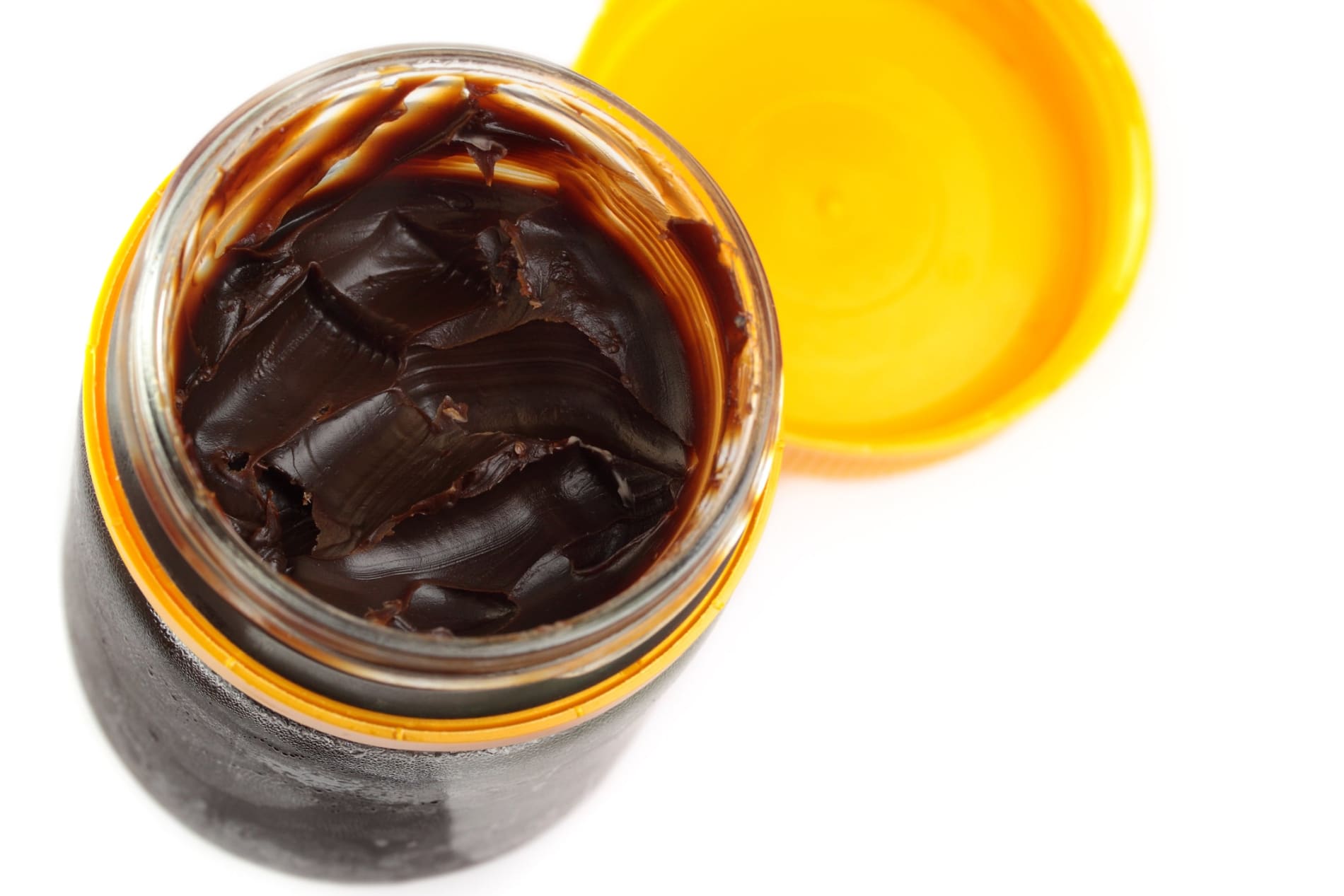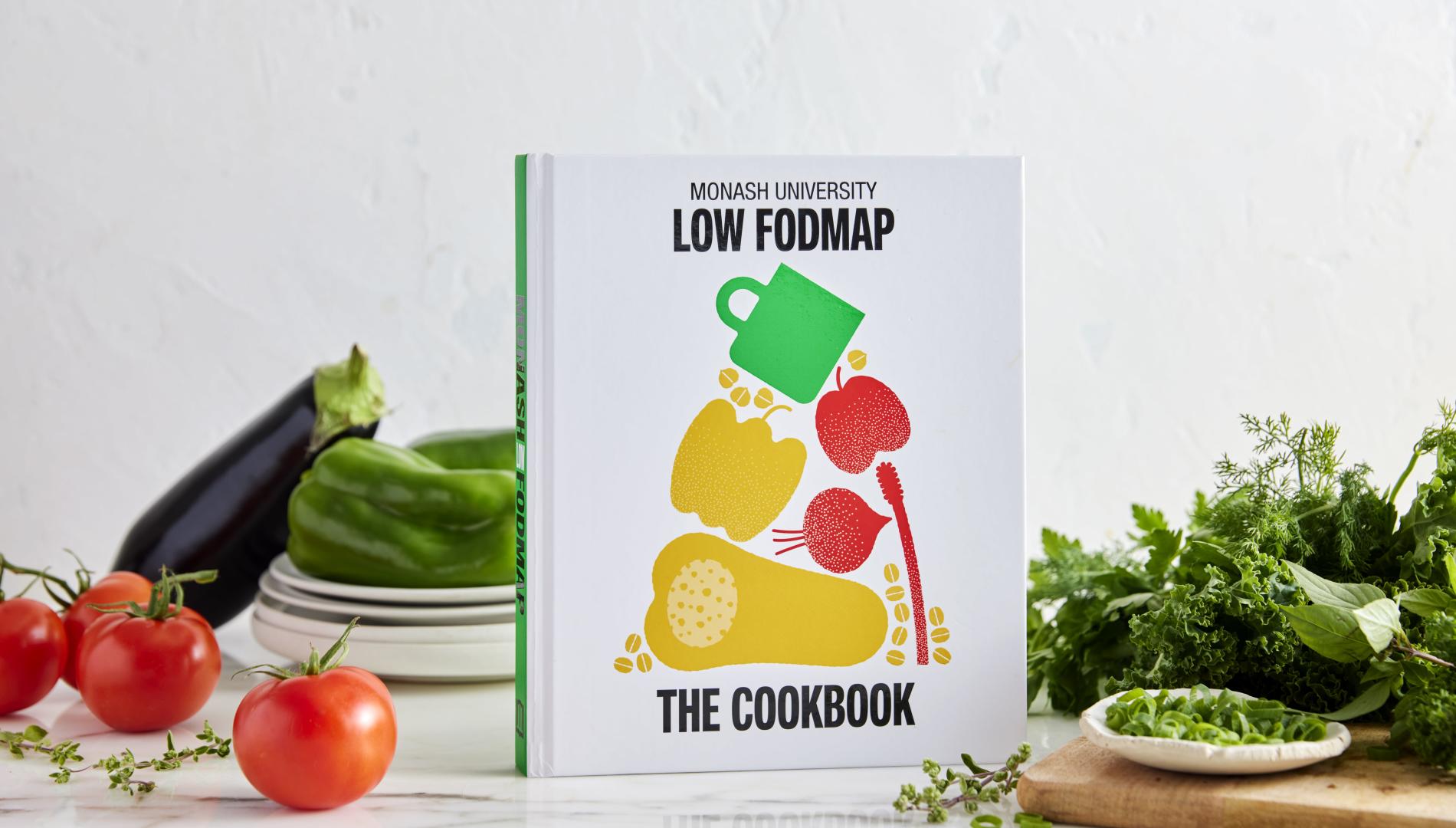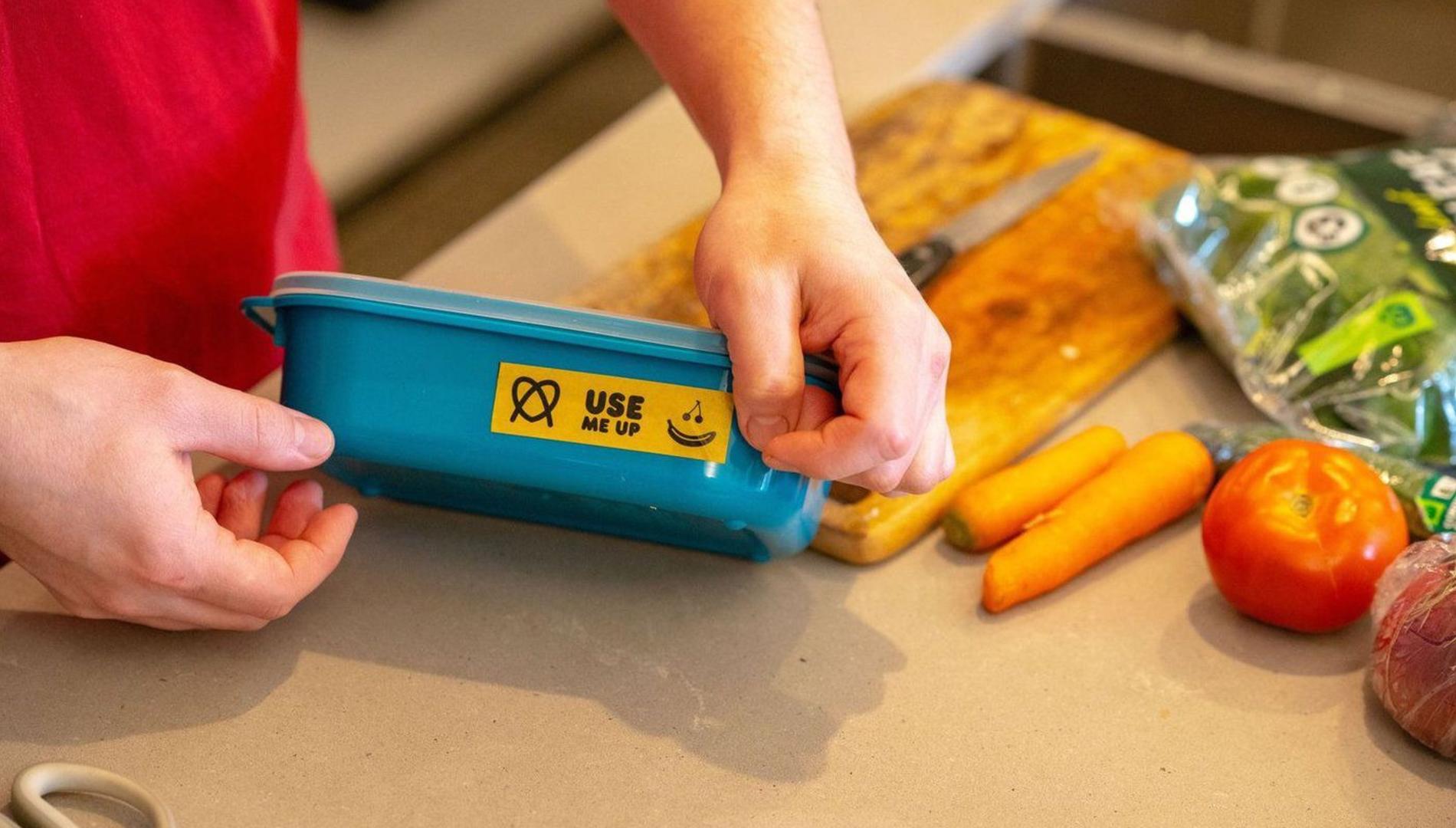A rose in every cheek: 100 years of Vegemite, the wartime spread that became an Aussie icon
There are roughly 22 million jars of Vegemite manufactured in the original Melbourne factory every year. According to the Vegemite website, about 80% of Australian households have a jar in the cupboard.
The cultural status of Vegemite is so enduring that, in 2022, the City of Melbourne Council included the smell of the factory at 1 Vegemite Way, Fishermans Bend, in a statement of heritage significance.
Vegemite first hit Australian supermarket shelves in 1923, but it took a while to find its feet.
Indeed, the now classic spread may have failed into obscurity as “Parwill” if not for a very clever advertising campaign in World War II.
A product of war
Vegemite has German U-boats to thank for its invention.
When WWI began in 1914, Australians were big fans of Marmite, the British yeast extract spread.
As the Germans began sinking ships full of British supplies to Australia, Marmite disappeared from the shelves. Due to the conditions of its patent, Marmite could only be manufactured in Britain.
As a result, there was a gap in the market for a yeast spread.
Fred Walker, who produced canned foods, hired food technologist Cyril P. Callister to create a homegrown yeast spread using brewer’s yeast from the Carlton Brewery.
Callister’s experiments produced a thicker, stronger spread than the original Marmite. Callister’s inclusion of vegetable extracts to improve the flavour would give the spread its name, Vegemite, chosen by Walker’s daughter from competition entries.
Australians were wary of Vegemite when it first appeared on grocery shelves, perhaps due to brand loyalty to Marmite.
To try and combat this, Walker renamed Vegemite “Parwill” in 1928 as a play on Marmite: “if Ma might, Pa will”.
This rebrand was short-lived. Australians were no interested in Parwill than they were in Vegemite.
Read more: Pass the Iced VoVos: The resurrection of Australiana
A nutritious food replacement
In the 1930s, Walker hired American advertiser J. Walter Thompson. Thompson began offering free samples of Vegemite with purchases of other Kraft-Walker products, including the popular Kraft cheese.
Kraft-Walker also ran limerick competitions to advertise Vegemite. Entrants would write the final line of a limerick to enter into the draw to win a new car.
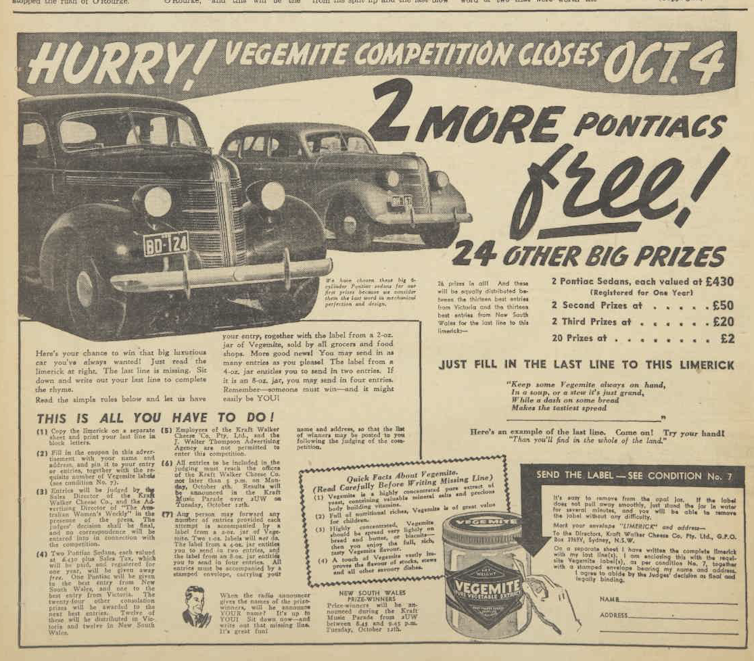
It would take another world war, however, before Vegemite became part of Australian national identity.
WWII also disrupted shipping supply routes. With other foodstuffs hard to come by, Vegemite was marketed as a nutritious replacement for many foods. One 1945 advertisement read:
“If you are one of those who don’t need Vegemite medicinally, the thousands of invalids and babies are asking you to deny yourself of it for the time being.”
With its long shelf life and high levels of B-vitamins, the Department of Supply also saw the advantages of Vegemite. The department began buying Vegemite in bulk and including it in ration kits sent to soldiers on the front lines.
Due to this demand, Kraft-Walker foods rationed the Vegemite available to civilians. Yet the brand increased advertisements. Consumers were told Vegemite was limited because it was in demand for Australian troops due to its incredible health benefits.
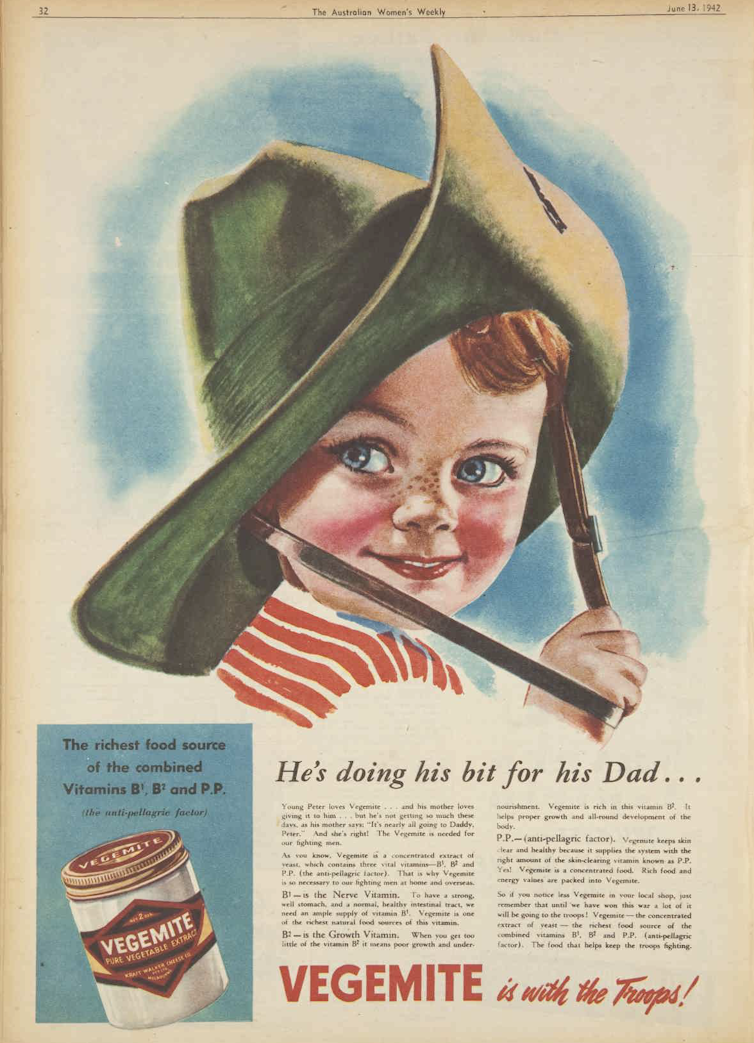
“In all operational areas where our men and those of our Allies are engaged, and in military hospitals, Vegemite is in great demand, because of its value in fighting Vitamin B deficiency diseases. That’s why the fighting forces have first call on all Vegemite produced. And that is why Vegemite is in short supply for civilian consumption. But it won’t always be that way. When the peace is won and our men come home, ample stocks of this extra tasty yeast extract will be available for everyone.”
This clever advertising linked Vegemite with Australian nationalism. Though most could not buy the spread during the rationing years, the idea that Vegemite was vital for the armed forces cemented the idea that Vegemite was fundamentally Australian.
Buying Vegemite was an act of patriotism and a way to support Australian troops overseas.
Happy little Vegemites
In the postwar baby boom, Vegemite advertisements responded to concerns about the nation’s health and the need to rebuild a healthy population.
This emphasis on Vegemite as part of a healthy diet for growing children would remain the key advertising focus of the next 60 years.
The ear-catching jingle was composed in the early 1950s, first for radio and then later used in the 1959 television ad.
The link between Australian identity and Vegemite was popularised internationally by Men At Work’s 1981 song Down Under, with the lyrics: “He just smiled and gave me a Vegemite sandwich.”
The 1980s also saw the first remake of the 1950s television campaign, re-colourising it for nostalgic young parents who had grown up with the original.
In February 2022, the first international arrivals welcomed back into Australia post-COVID were greeted with a DJ playing Down Under, koala plushies, and jars of Vegemite.
On Vegemite’s centenary in 2023, the unassuming spread is now firmly cemented as an Australian cultural icon. Love it or hate it, Vegemite is here to stay.
Read more: Curious Kids: Why do some people find some foods yummy but others find the same foods yucky?
![]()
Hannah Viney works for the Old Treasury Building Museum. This research was originally conducted for an upcoming exhibition at the Museum.
This article originally appeared on The Conversation.
